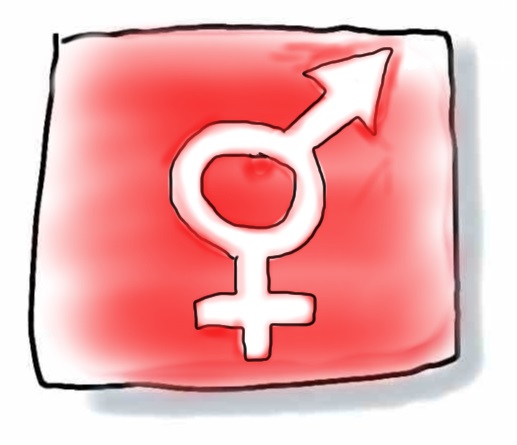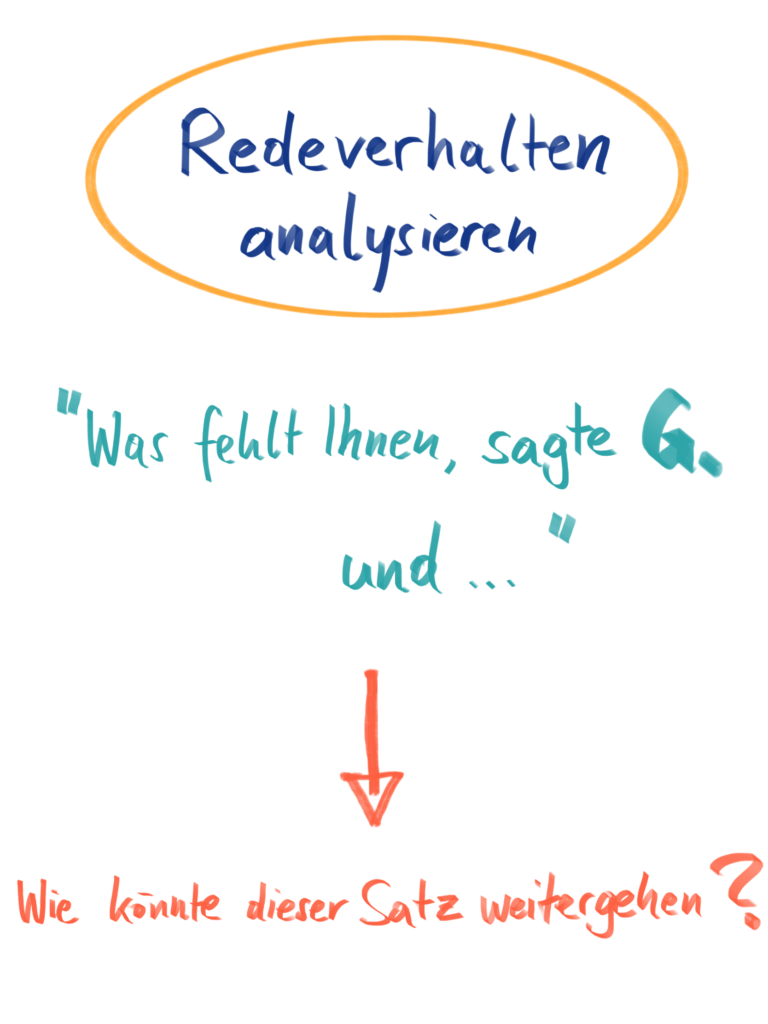The following exercises mainly address the observation and comparison of behaviours attributed to male and female. The focus of the observations should not be so much on one’s own behaviour, but rather on the collective and social aspects of gender. At the same time, however, it should be kept in mind that collective attributions can also quickly affect or hurt our individual self-image. Careful handling is particularly important here: gender stereotypes should be addressed but at the same time they should not be reinforced or codified.
1) Make collages
** Objective: To make people aware of and question stereotypes.
** Duration: 50 minutes
** Required material: old newspapers, magazines, advertising leaflets, glue and large sheets of paper
Task for small groups (mixed or unisex)
Each group creates one collage for MAN and one for WOMAN.
Evaluation in plenary
The collages should be hung up in the room and looked at in silence. Discussion afterwards based on questions, for example:
- Which characteristics/abilities are embodied by WOMAN or MAN?
- How do these characteristics correspond to yourselves? Where are there differences?
- Do you notice anything in particular?
- Where would you rather belong?
Source: Salto, Rolle, Pflicht und Kür. Gender Manual II, Verlag Pestalozzianum 2001, p.44
2) „What’s the matter with you“
** Aim: To analyse gender-specific speaking behaviour
** Duration: 50 minutes
** Required material: Pin board. Cards in two colours
Task for individual work
Read out an incomplete sentence to everyone or pin it on the pin board. For example: „What’s the matter with you, said G. and…“
How could this sentence continue?
Let the scene play out in your mind’s eye and then write a continuation of the sentence on a card (men and women in different colours).
Sharing and evaluating in plenary
Hang the cards on the pin board, separated by colour.
Allow time for everyone to read the cards
Evaluate the notes using questions, for example:
• Who speaks more often, man or woman?
• Who is spoken to more often, man or woman?
• Is there a hierarchy in the conversation? Between who?
• How often were women mentioned and how often men?
• Are there similarities or differences between men and women in the continuations? If so, what are they? How can these be explained?
Taken from: Salto, Rolle, Pflicht und Kür. Gender Manual II, Verlag Pestalozzianum 2001, p.45
3) Analysing images in a gender-conscious way
** Objective: Train own view for gender-specific imagery.
** Duration: 30 minutes
** Required materials: Magazines, brochures (if possible material from trade unions)
Task for groups of two or small groups
Flip through a magazine or brochure until you come to a double page spread with several pictures of people. The more people, the better. Analyse the pictures in terms of sex and gender and discuss using the following questions:
• How many women and men do you see?
• How are the women and how are the men depicted? Are they alone or in a group?
• Who is in the centre and who is in the background?
• How do the captions match the pictures?
• Do the pictures reinforce gender stereotypes or not? If so, by what means?
Taken from: Salto, Rolle, Pflicht und Kür. Gender Manual II, Verlag Pestalozzianum 2001, p.55
4) Profiles
** Objective: Question the unambiguousness of gender. Reflect on own perception.
** Duration: 60-90 minutes
** Required material: Profile template (can be downloaded here and adapted depending on the group and participants) and photos from Chris Rijksen’s project.
Task for small groups (mixed or unisex)
Each group receives a photo and a profile to be filled in for the respective photo. Make sure that the groups can only see their own photo. It may make sense to physically separate the groups or to distribute the photos to the groups in envelopes. Give the participants time to come up with an accurate fictional description of each person.
Evaluation in plenary
The groups should present their profiles based on their photos. Ask why certain characteristics and interests were chosen and how they were connected to the person’s image in the photos.
The group can then discuss the alleged masculine and feminine characteristics. Likewise, it is possible to discuss the alleged separateness between the sexes. When is a person recognisable as a man and when as a woman? How can confusion be dealt with and what reactions are conceivable when people cannot be clearly identified as men or women?
Taken from: Salto, Rolle, Pflicht und Kür. Gender Manual II, Verlag Pestalozzianum 2001, p.59
Lust auf mehr? Zu allen Einträgen der Serie #mm kommst du HIER!

Dieses Werk ist lizenziert unter einer Creative Commons Namensnennung-NichtKommerziell-Weitergabe unter gleichen Bedingungen unter gleichen Bedingungen 3.0 Österreich Lizenz.
Volltext der Lizenz

Dieses Werk ist lizenziert unter einer Creative Commons Namensnennung-NichtKommerziell-Weitergabe unter gleichen Bedingungen unter gleichen Bedingungen 3.0 Österreich Lizenz.
Volltext der Lizenz



